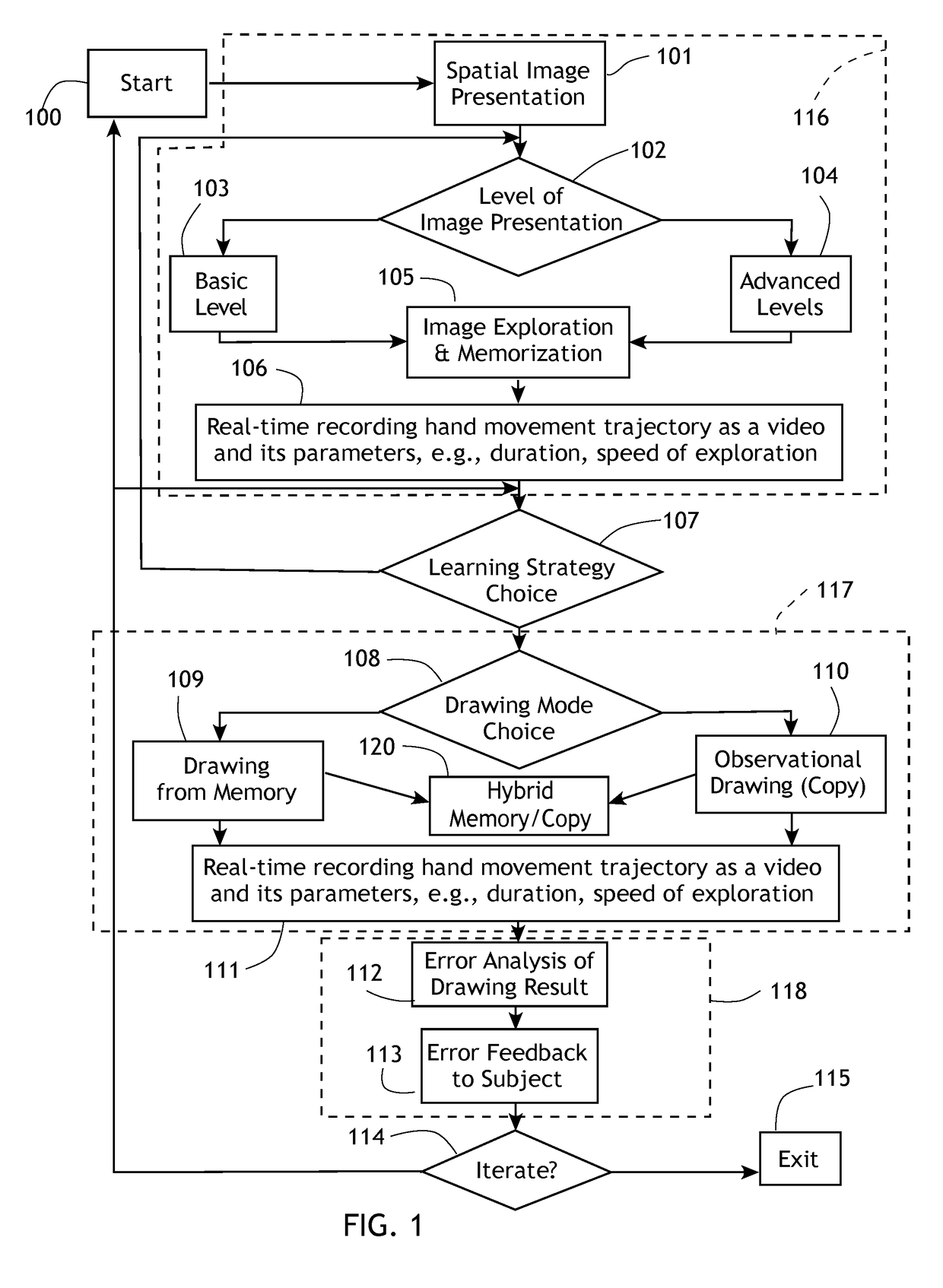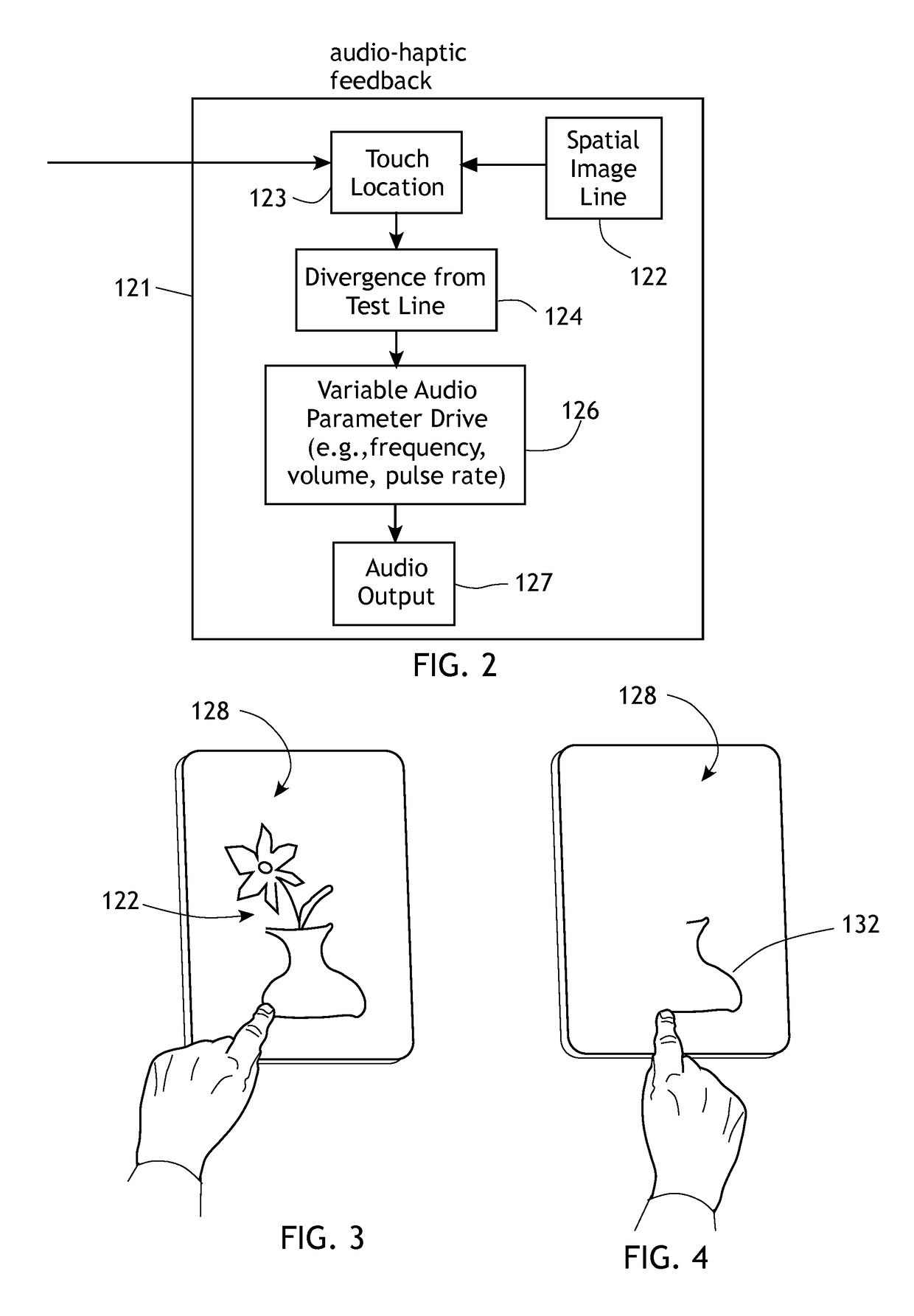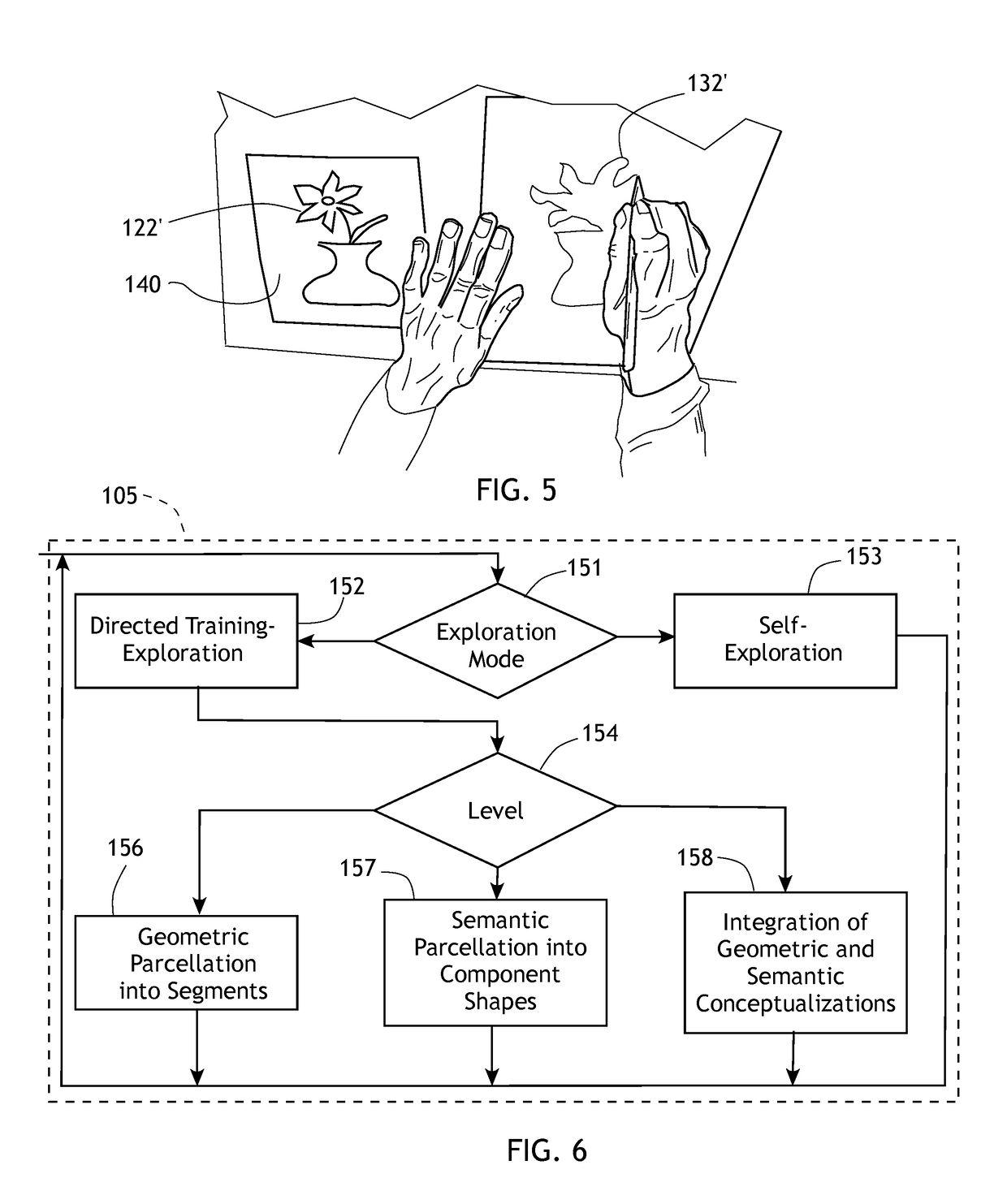System for Training Spatial Cognition, Memory and Spatiomotor Coordination through Drawing
- Summary
- Abstract
- Description
- Claims
- Application Information
AI Technical Summary
Benefits of technology
Problems solved by technology
Method used
Image
Examples
Embodiment Construction
[0026]The present invention generally comprises a system for training an individual to acquire enhanced spatial cognition, memory and spatiomotor skills through drawing without necessarily using the eyes or direct visualization. Rather, the system employs tactile learning of an input line or shape or graphic, and requires the individual to draw freehand without necessarily using the eyes, the input line or shape.
[0027]With regard to FIG. 1, the methodology of the present invention broadly includes three phases that occur sequentially. In an exploration and memorization phase 116, spatial or structural information is presented to an individual, so that an image or spatial structure of a defined conformation is delivered to the subject. Thereafter, the subject is given a time period to memorize the spatial or structural information, with the guidance of descriptive multi-level analysis of the segments or image part under the subject's exploring hand(s) that is provided verbally, elect...
PUM
 Login to View More
Login to View More Abstract
Description
Claims
Application Information
 Login to View More
Login to View More - R&D
- Intellectual Property
- Life Sciences
- Materials
- Tech Scout
- Unparalleled Data Quality
- Higher Quality Content
- 60% Fewer Hallucinations
Browse by: Latest US Patents, China's latest patents, Technical Efficacy Thesaurus, Application Domain, Technology Topic, Popular Technical Reports.
© 2025 PatSnap. All rights reserved.Legal|Privacy policy|Modern Slavery Act Transparency Statement|Sitemap|About US| Contact US: help@patsnap.com



